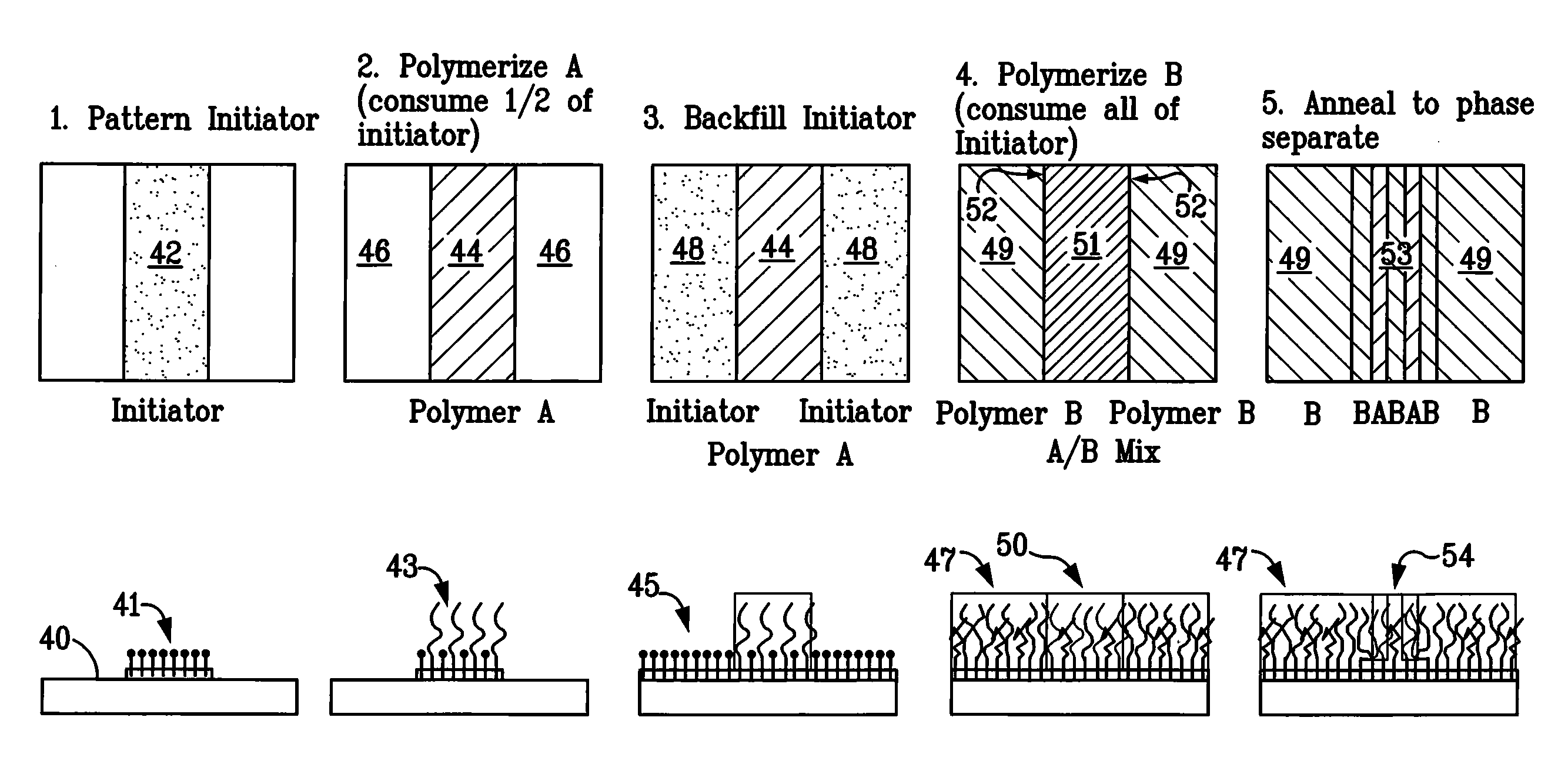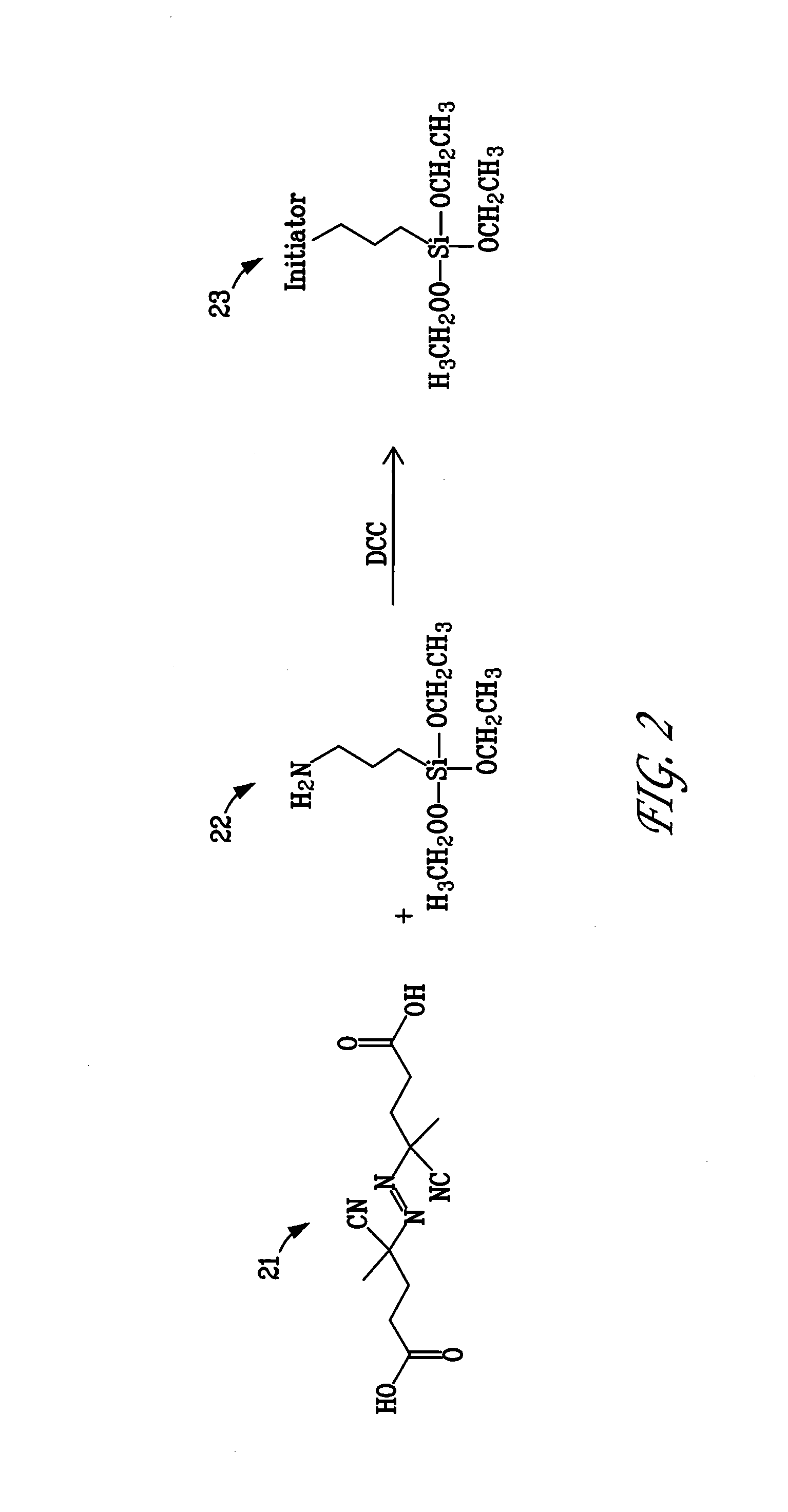Nanopatterns by phase separation of patterned mixed polymer monolayers
a polymer monolayer and phase separation technology, applied in the field of molecular self-assembly, can solve the problems of low industrial output of such technology and the realization of fundamental limitations
- Summary
- Abstract
- Description
- Claims
- Application Information
AI Technical Summary
Benefits of technology
Problems solved by technology
Method used
Image
Examples
Embodiment Construction
[0014]This invention is directed to a method of creating micron-size and sub-micron-size patterns that can direct the self-assembly of surface-bonded mixed polymer brushes to create nanoscale patterns in the phase-separated brush. The larger scale features, or patterns, can be defined by a variety of lithographic techniques, as well as other physical and chemical processes including but not limited to etching, grinding, and polishing. The larger scale directing feature can also be the end of the substrate, whether the substrate is large or small. Patterns can also be created by soft lithographic techniques and standard lithographic techniques using UV and / or visible light. A mixed polymer monolayer, or mixed polymer brush, is synthesized within the patterned features. Nanoscale phase separation of the mixed polymer layer will form parallel lines within micron-sized lines. Other, more complex features can also be replicated, where phase separation can form concentric circles, squares...
PUM
 Login to View More
Login to View More Abstract
Description
Claims
Application Information
 Login to View More
Login to View More - R&D
- Intellectual Property
- Life Sciences
- Materials
- Tech Scout
- Unparalleled Data Quality
- Higher Quality Content
- 60% Fewer Hallucinations
Browse by: Latest US Patents, China's latest patents, Technical Efficacy Thesaurus, Application Domain, Technology Topic, Popular Technical Reports.
© 2025 PatSnap. All rights reserved.Legal|Privacy policy|Modern Slavery Act Transparency Statement|Sitemap|About US| Contact US: help@patsnap.com



